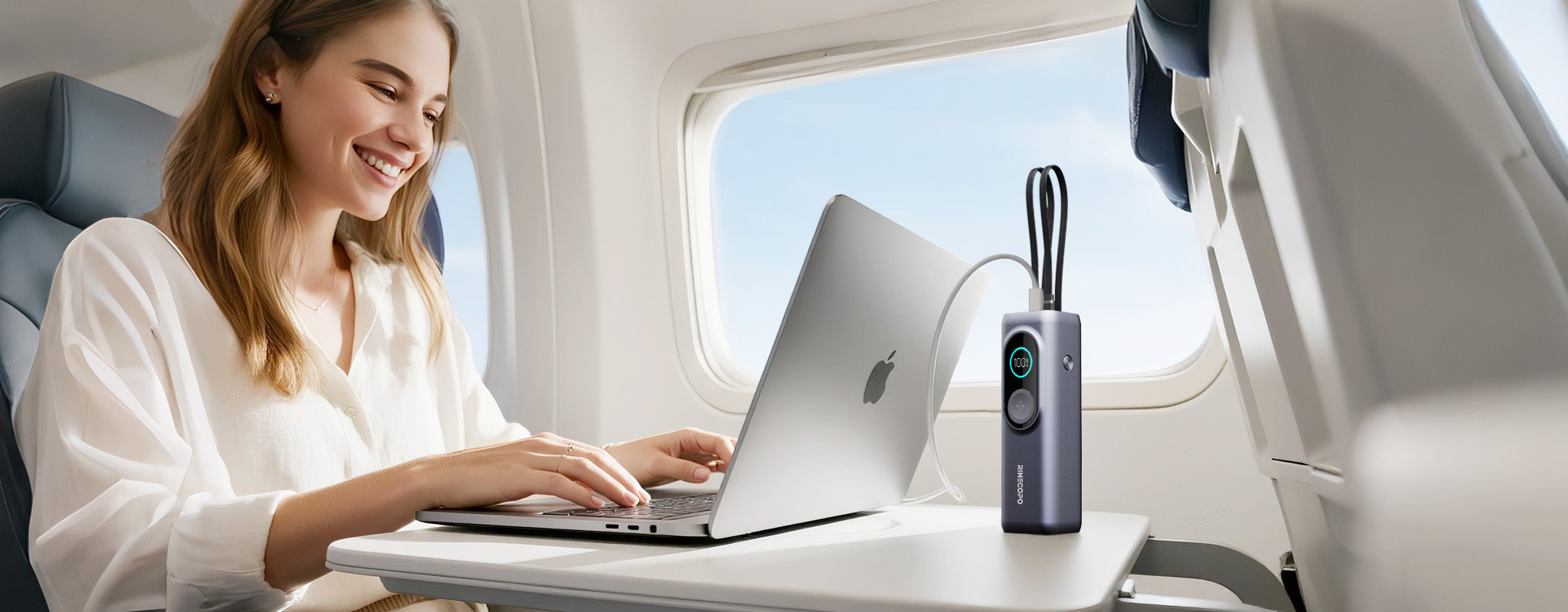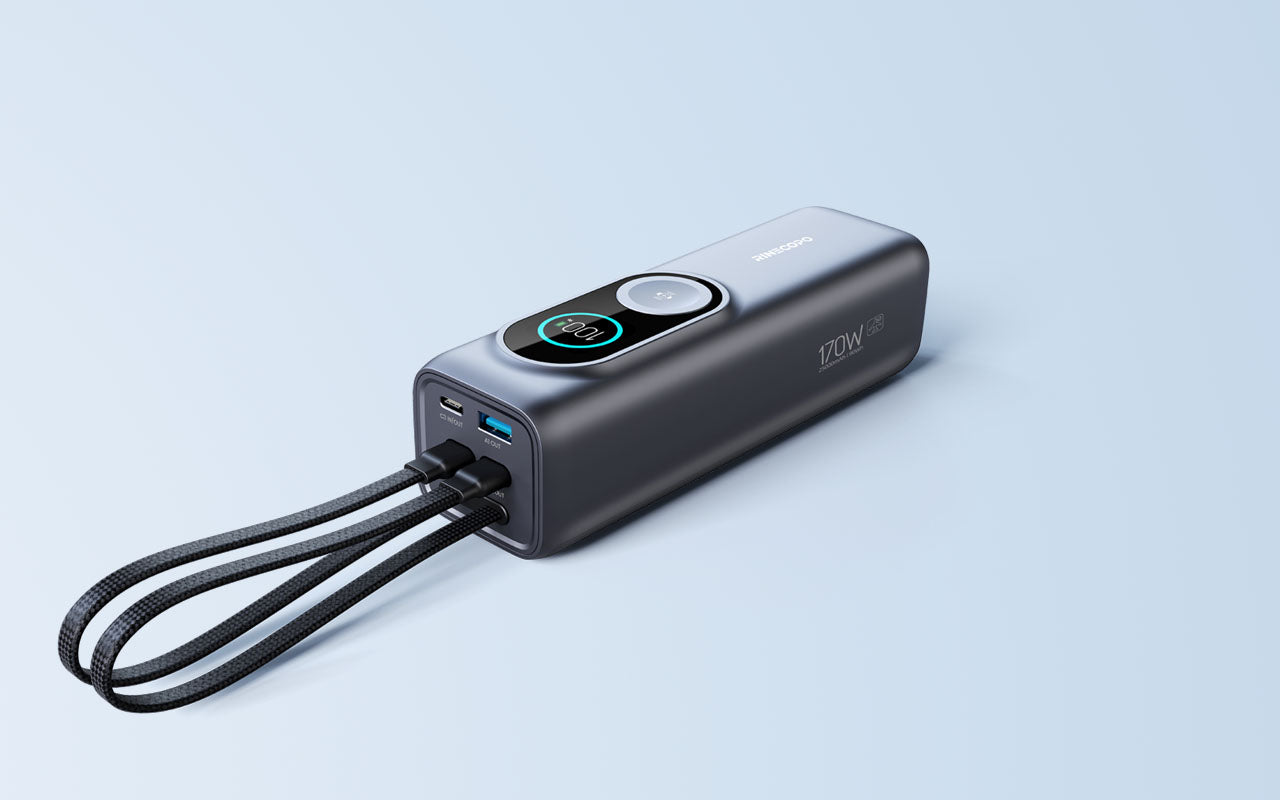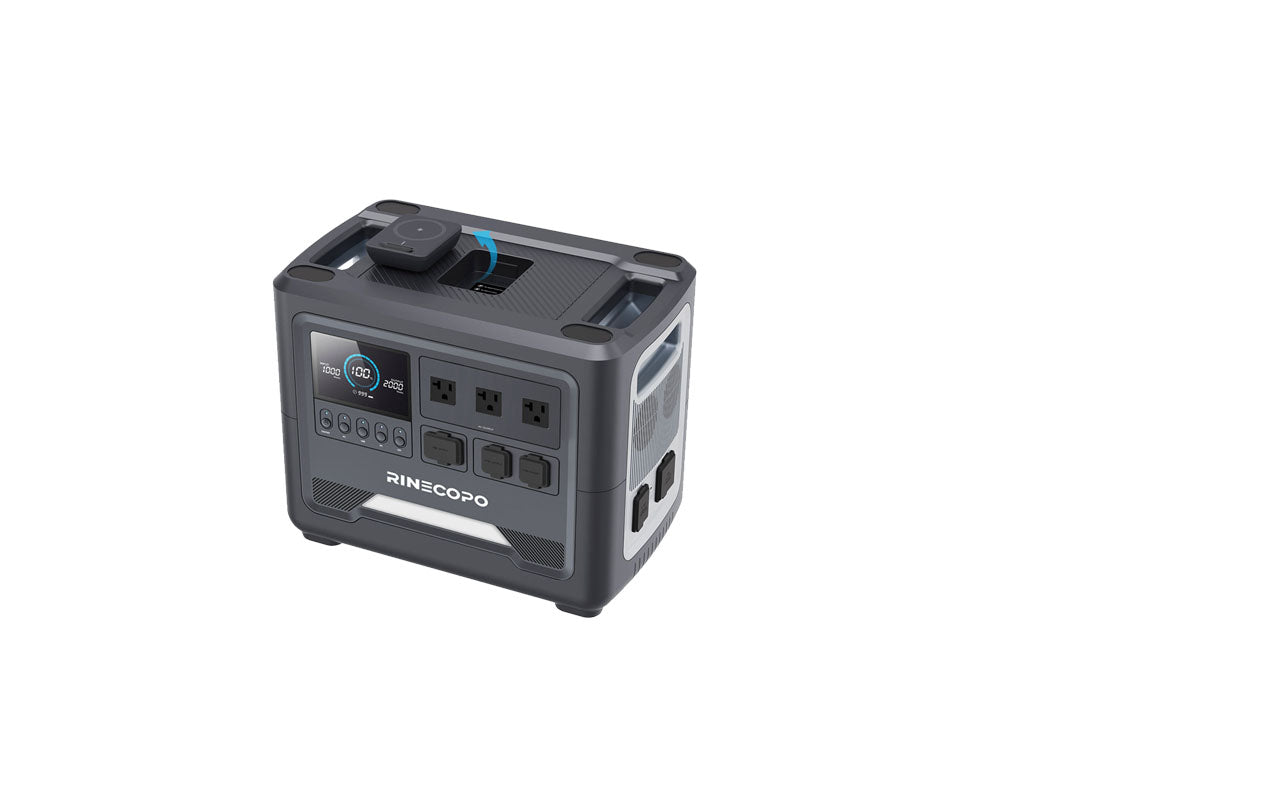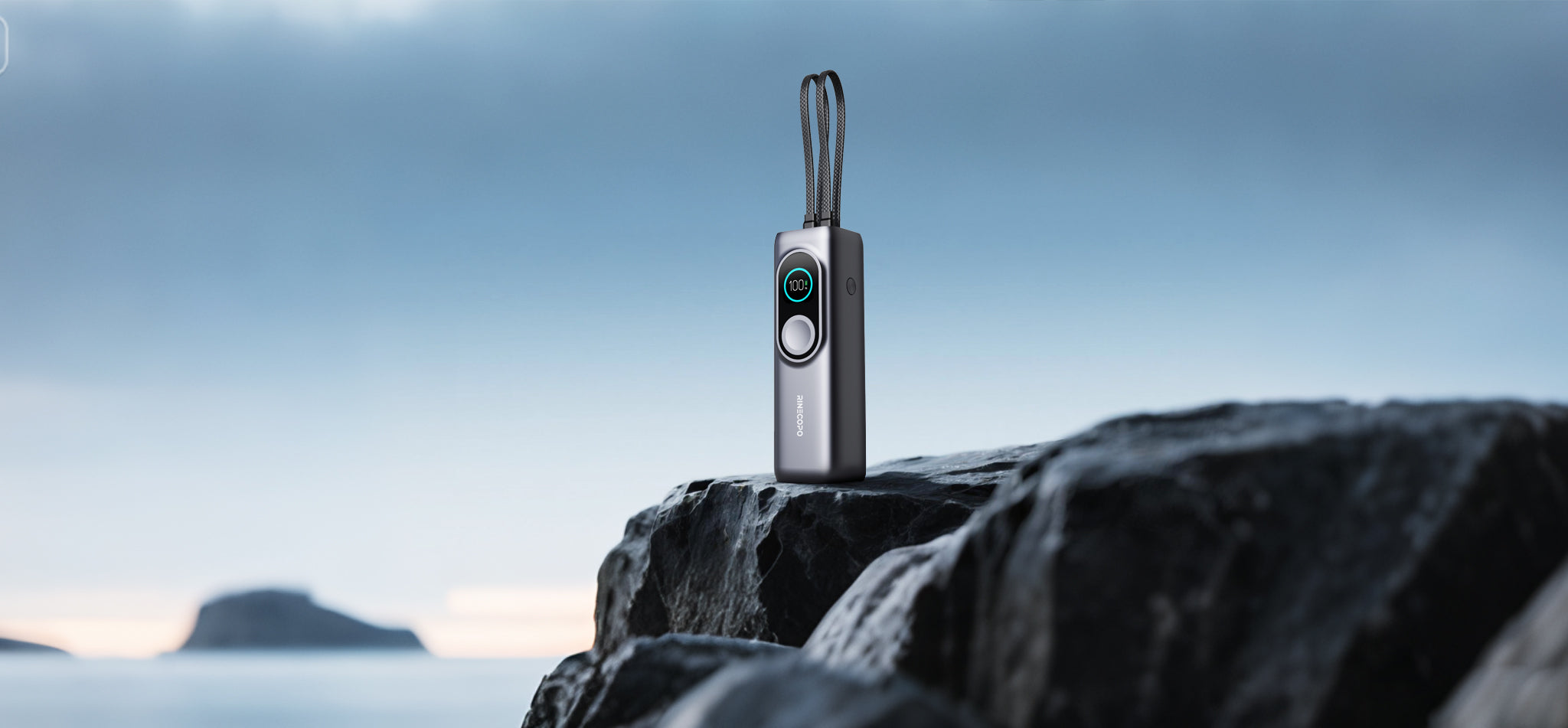
Today, power banks have become an essential part of everyday life, allowing us to charge our phones, tablets, and headphones anywhere, anytime. But if you’ve ever had your power bank confiscated at airport security, you know how frustrating it can be. Especially when flying, a non-compliant power bank can quickly become a travel nightmare.
So, are power banks allowed on planes? How can you avoid getting them confiscated at the airport? This blog explains the reasons behind airport restrictions, TSA and international guidelines, smart packing tips, and recommends RINECOPO’s TSA-approved portable chargers to keep your travels powered up and stress-free.
✈️ Why Do Airports Confiscate Power Banks?
Airport security has strict rules on lithium battery devices—especially high-capacity power banks. If you’re not aware of these rules, your power bank could be taken away at the security checkpoint.
Common reasons for confiscation include:
-
Exceeding Capacity Limits: Most airlines follow FAA regulations, which restrict lithium battery capacity to 100Wh (around 27,000mAh). Any power bank above that limit may be confiscated unless you have special airline approval. Anything above 160Wh is strictly prohibited.
-
Missing or Unreadable Labels: Power banks must clearly display capacity (in mAh or Wh). If your device lacks a visible label, security may reject it.
-
Packed in Checked Luggage: Lithium-ion batteries must be carried in your hand luggage. Stowing them in checked bags is not allowed due to fire risks.
-
Damaged or Swollen Batteries: If your power bank is deformed, swollen, or leaking, it will be considered a safety hazard and seized, regardless of its size.
-
Regional Differences: Some airports or countries have even stricter rules. For example, certain international terminals may enforce lower capacity thresholds or limit the number of devices you can carry.
🌐 TSA & International Guidelines for Power Banks
To ensure smooth travel, it’s important to follow both TSA and international regulations for carrying power banks:
| Capacity Range (Wh) | Allowed on Plane | Airline Approval Required |
|---|---|---|
| ≤100Wh (≈27,000mAh) | ✅ Yes | ❌ No |
| 100Wh – 160Wh | ✅ Yes | ✅ Yes |
| >160Wh | ❌ No | ❌ Not Allowed |
-
Carry-On Only: TSA and global agencies require all lithium power banks to be placed in your carry-on luggage, not in checked baggage.
-
Clearly Labeled Capacity: Make sure the mAh or Wh rating is printed visibly on the device.
-
Good Condition Only: Only bring power banks that are intact and meet safety standards.
✅ Best Practices for Flying with Power Banks
Follow these practical tips to ensure your power bank gets through airport security without issues:
-
Keep It Accessible
Store your power bank in an outer pocket of your carry-on bag for easy inspection during security screening. Use a padded pouch to protect it from physical damage. -
Charge Multiple Devices
If you carry multiple electronics (phones, tablets, earbuds), choose a multi-port power bank to charge them all at once. Wireless charging models also reduce cable clutter. -
Maximize Charging Opportunities
Take advantage of airport charging stations, hotel wall chargers, or layovers to top off your battery before takeoff. -
Store Safely and Use Wisely
Avoid exposing your power bank to extreme temperatures. When not in use, power it off to preserve battery life. -
Choose a Trusted Brand
To minimize the risk of confiscation or failure, always choose a quality-assured brand like RINECOPO. Our power banks meet international safety standards and are clearly labeled for travel approval.
🧳 TSA-Approved Power Banks from RINECOPO
🔋 RINECOPO PB02 (25,000mAh, 100W Output, TSA-Compliant)
This high-performance model features a safe 90Wh battery, fully compliant with airline standards. With 100W PD fast charging, it’s capable of powering laptops, phones, and more—perfect for business trips or long-haul flights.
| Feature | Specification |
|---|---|
| Battery Capacity | 25,000mAh / 90Wh |
| USB-C Input/Output | Up to 100W (20V/5A) |
| USB-A Output | Up to 33W |
| Wireless Charging | 3W |
| Total Power Output | Up to 170W, supports multiple devices simultaneously |
| Size & Portability | Compact & travel-friendly |
Why Choose RINECOPO PB02?
-
Clearly labeled capacity for TSA verification
-
High-power fast charging (up to 100W)
-
Multiple ports for multi-device charging
-
Airline-safe design, passes security with ease
-
Built-in protections: overheat, overcharge, and short-circuit prevention
🧠 Final Thoughts: Fly Smarter with the Right Charger
To avoid having your power bank taken away at the airport, always follow key safety rules: stay under the airline’s capacity limits (typically 100Wh), ensure the label is visible, never pack power banks in checked baggage, and avoid bringing damaged batteries. These are the most common reasons for confiscation.
With RINECOPO’s TSA-approved, high-quality portable chargers, you can travel with confidence—knowing your power solution meets international safety standards and keeps your devices running throughout your journey.
💬 Frequently Asked Questions
Q: Why are power banks restricted on planes?
A: Because they contain lithium-ion batteries, which can overheat or catch fire if damaged or poorly packed. That’s why airlines restrict capacity and require carry-on only.
Q: Where should I put my power bank during the flight?
A: Always keep your power bank in your carry-on bag and store it somewhere easy to access in case it needs to be screened or inspected.
Q: Can I carry a 20,000mAh power bank on a plane?
A: Yes! A 20,000mAh power bank equals around 74Wh—well below the 100Wh limit. Just make sure the label is visible.
Q: What happens if I put my power bank in checked luggage?
A: Airport security may remove it before your flight. Lithium batteries are banned in checked baggage due to fire risks, and putting them there may result in confiscation. Always carry them with you.
If you’re planning a trip and need a TSA-compliant, high-speed power bank, check out the full RINECOPO travel collection here!
Recent Posts
Blog Tags
Power Banks: Your Pocket-Sized Energy Hub That Keeps the World Connected
At its core, a power bank is a portable electronic device that integrates a rechargeable energy cell (typically lithium-ion or lithium-polymer), charging circuitry, and input/output ports.
Its primary role is simple: to store electricity and provide power to your devices when you’re away from a wall outlet.
Best Power Bank Buying Guide: How to Choose the Right Portable Charger for Every Need
The capacity and portability of a power bank are always in direct conflict. More power inevitably means more weight and bulk. When choosing the right one, it all comes down to your actual usage scenarios:
Best Power Bank for iPhone 17: RINECOPO 25,000mAh 170W Portable Charger
That’s where the RINECOPO 25,000mAh 170W power bank steps in — the ultimate power bank for iPhone 17 and other high-performance devices.





